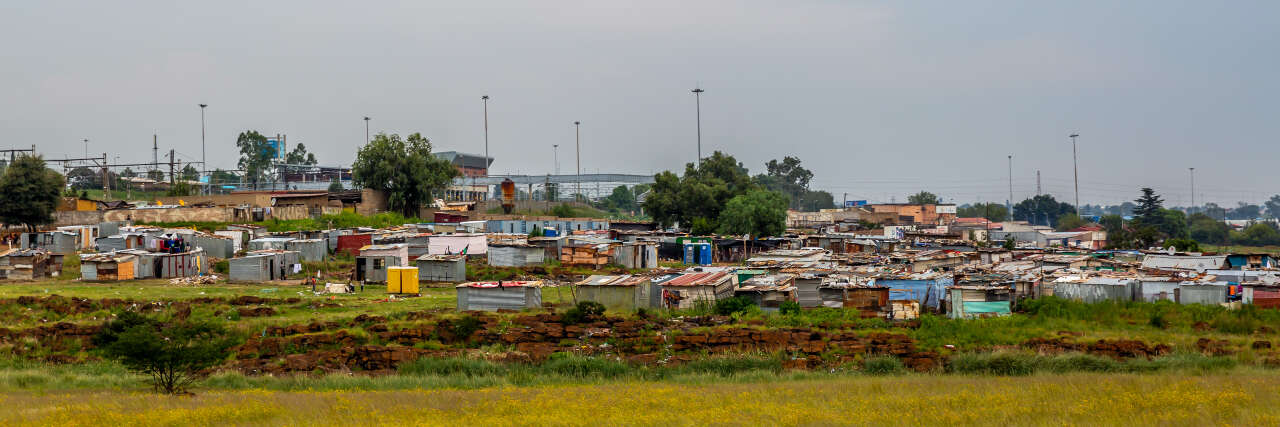
The idea was that by making services (water, electricity and refuse) accessible and affordable, the national government would be legitimised.
But in 2021, South Africa’s municipalities are in dire straits. They are mired by service delivery failures, poor management, financial mismanagement, billing crises and power outages. The electricity cuts are due to ageing and failing infrastructure, compounded by electricity supply cuts by Eskom. The Auditor General has said that almost half of the country’s municipalities are under financial strain and are likely to get worse.

South Africa’s constitution allocates three revenue sources to municipalities to fulfil their mandate: property taxes; surpluses generated from services; and funding transfers from the national government. Electricity is by far the biggest contributor among the services, and always has been. But this funding model comes with significant risks.
I traced events to gain an understanding of the evolution of this income stream and the practice that supports it. Documents from as far back as the early 1900s show that the municipal funding model remains largely unchanged. If this deeply entrenched path-dependent practice isn’t understood, it will undermine necessary reform – and not for the first time. It will place further pressure on municipal finances and service delivery and ultimately erode national government legitimacy.
South Africa’s municipal funding model
Since the country was formed into a union between the British and Afrikaners in 1910, South African municipalities have only had one true revenue source: property taxes. But this has always been insufficient, and unpopular. Thus, the British system of generating surpluses from the provision of services provided a solution for local government politicians who sought to please the electorate with the greatest influence – property owners. They argued that it encouraged property development.
Municipal electricity departments, however, were vehemently against cross-subsidisation, referring to it as the relief of rates. For them it was an indirect and inequitable tax. And it created the perverse incentive to defer maintenance and capital investment to fund other projects and keep increasing electricity tariffs to fund revenue shortfalls. In short, the practice was unsustainable.
For over 20 years, the Association of Municipal Electricity Undertakings fought to terminate or cap surpluses, but finally gave up in 1945, when it became evident that national government had no intention of financing municipalities or giving them other ways to raise revenue. This entrenched the chosen path of municipal funding.
When democracy finally came to South Africa in 1994, the opportunity to change was missed. Both the outgoing and new governments agreed (for their own reasons) that local government should be strong. This approach was also supported by the mainstream economic theory that by being closer to citizens, municipalities are better placed to understand community needs.
The 1996 constitution elevated local government to a sphere of government – an equal partner with protected functions and revenue sources. Local government was allocated two exclusive revenue sources: property tax and the existing practice of relief of rates. The past, once again, decided the future.
The ink on the constitution had hardly dried before the national government announced plans to reform the electricity distribution sector (municipalities and the national utility, Eskom). Key drivers of reform included attracting new investment, broadening economic ownership, increasing operational efficiencies, energy security, and stabilising prices. This would alleviate the distribution burden for smaller municipalities, with the larger ones participating in the new structure.
More than ten years and several billion rand later, the plan was shelved. This was because Eskom, local and national government could not agree on a structure, and without a constitutional change the deadlock could not be broken. The national government withdrew.
During this time, municipalities continued to rely on electricity surplus revenues, but delayed capital investments while awaiting the final outcome of the reform process. And they happened to benefit from steep tariff hikes from 2007 onwards (180% in real terms by 2020), deepening the “stickiness” of the practice.
The tide turned in 2017. High tariffs, environmental imperatives of climate change, self-generation and a decade of low or no economic growth all took their toll. Stagnant revenue due to decreased demand and eroded margins meant that, by 2020, surpluses became deficits and Johannesburg’s City Power (with particularly acute mismanagement) had a R5.6 billion (US$400m) overdraft.
History matters
Electricity surpluses may return, as they have in the past. But my research suggests that the exploitation of surpluses has finally reached its economic limits. The thorny issues raised by the Association of Municipal Electricity Undertakings almost 100 years ago remain relevant:
- Municipal electricity tariffs include an indirect tax, making them non-cost reflective.
- High tariffs ignore the needs of poor and large households.
- Inflated tariffs encourage fuel switching by those who can afford it, placing the cross-subsidisation model under further strain.
- Cross-subsidisation compromises prudent accounting practices like depreciation and redemption.
- Electricity provision must be efficient to stimulate the economy.
- Surpluses vary annually. Over-reliance may lead to funding problems if sales decrease.
Ultimately, a century-old, locked-in path has run out of road. Urgent reform is needed as municipal funding shortfalls cannot simply be supplemented by increasing national transfers.
From a national policy perspective, conflicting objectives must be addressed – policies that support cost-reflective tariffs on the one hand and cross-subsidisation on the other.
When it comes to service delivery, neglected infrastructure can no longer lay the proverbial golden egg. Municipalities are over-burdened and many are overwhelmed. This is made worse by their limited scope to raise revenue. New and appropriate income streams, which reflect 21st-century reality, are needed – such as non-subsidised property taxes, vehicle congestion charges and city taxes. Finally, it’s questionable whether municipalities should own and operate electricity utilities.
This article is republished from The Conversation under a Creative Commons license. Read the original article.






